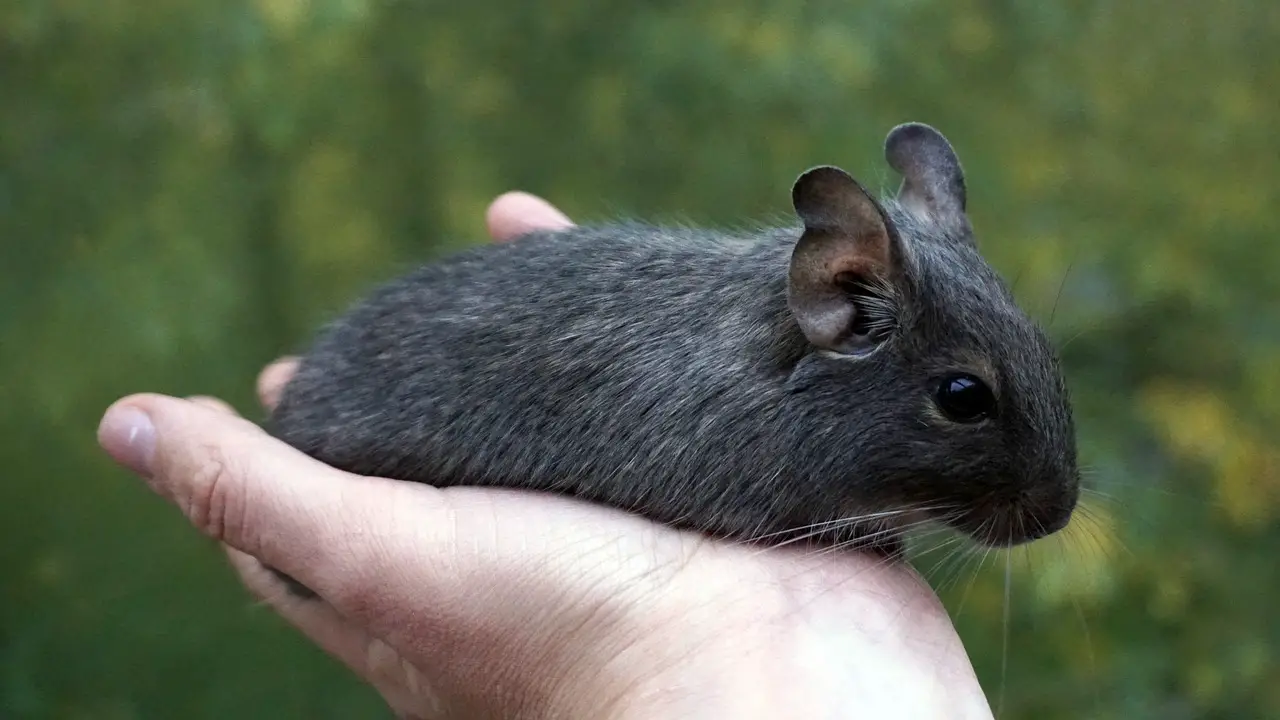Chinchillas are small furry rodents usually kept as pets. They have dense fur that makes them susceptible to external parasites such as mites and fungus. These can cause many issues for chinchillas, affecting their health and behavior.
One of the most common problems among pet chinchillas is an ear fungus infection. It’s a health problem that can be fatal if left untreated. This post answers what is chinchilla ear fungus, and how to fix it?
What is chinchilla ear fungus?
Ear fungus in chinchillas is most often caused by the fungal yeast “Malassezia pachydermatis.” Ear mites can also cause it.
Chinchillas are more susceptible to fungal infections than other pets because their ears are shaped like vases and have few natural defenses against infection.
If your chinchilla has large or crusting lesions with pain, licking/chewing of the infected area, or thick dark brown waxy secretions coming from the ears, it likely has ear mites.
Chinchilla ear fungus can be one of the most stubborn ailments to deal with when it comes to a chinchilla’s health.
Even more so than things like upper respiratory infections or pneumonia, dealing with chinchilla ear fungus is an ongoing struggle that requires an extremely consistent effort to bring your chin back to full health.
The existence of this ailment also means that you need to keep an even closer eye on your pet’s well-being because the condition is much easier for them to pick up and very difficult for them to shake off.
What causes chinchilla ear fungus

Chinchillas are long-lived animals expected to live for around 15 years.
This impressive life expectancy is likely the reason why chinchilla ear fungus took so long for breeders and owners alike to study in detail to try and pinpoint why it appears in their chins when other species outside of rodents don’t seem to struggle with it as much.
There has been a great deal of success over the last few decades or so in establishing what might cause a chinchilla to contract this ailment and how even young kits can avoid developing an infection later on in life.
One of the most important things to note from all of this is that, when it comes to cleaning a chinchilla’s ears, one thing needs to be avoided at all costs, and that’s using cotton swabs.
Any human medical tools should always be kept well out of the reach of these animals.
What are chinchilla ear fungus symptoms?
When dealing with an ear infection, you need to keep watching your pet and even take them in so the veterinarian can do a culture on the inner surfaces of your pet’s ears to see any fungus or bacteria actively growing inside your chin’s ears.
You might notice some signs on your own, and if they seem concerning, you can take your pet to a veterinarian to make sure everything is fine.
These include:
Dark brown waxy secretions coming from the ears
This is one of the most telling signs that your pet might be carrying a fungus too. Chinchillas tend to only produce dark, black, or brown wax in their ear canals, and this coloration isn’t caused by dirt like it often is in other animals (like dogs).
If you notice anything out of the ordinary with your chinchilla’s earwax, especially if it appears to be lighter than usual, call your veterinarian if you haven’t already and schedule an appointment for them to come to take a look at your pet and their ears.
Thick earwax that seems to be of a different color than usual
As we just mentioned, there are some key differences in how chinchillas produce their wax compared to other animals. This means that the type of wax your pet is producing could potentially offer you some important clues about any ear infections or ailments they might have too.
If you notice that the wax build-up in your chin’s ears seems darker than usual, thicker, or anything unusual at all, schedule an appointment with your veterinarian as soon as possible so they can check out what might be going on inside of your pet’s ears.
Scratching or shaking of their head more than usual
The fact that ear fungus is so painful for these animals means that if they contract this condition, the chances are good that they’ll be scratching their head and shaking it around a lot.
This is their way of getting the pain and discomfort in their ears to stop because this type of fungus causes a lot of inflammation and irritation inside their ear canals.
Since chinchillas rely on the hairs inside their ears for balance, when they shake their head around like this, it can cause them to lose control and fall, which frequently leads to broken bones or injuries that could be much worse.
Learn about chinchilla shaving here- sometimes it’s a medical necessity!
Redness on the inside of their ears
The skin lining your pet’s inner ear canal is very thin and delicate even without an infection present, meaning that signs of redness, reddish-brown discoloration, or any other symptoms that show up on the insides of your chinchilla’s ears are quite serious business.
Redness is a sign that the area might be developing an infection, and as we already mentioned, these kinds of infections can spread quickly.
To make sure your pet gets the help they need as soon as possible, call your vet right away if you notice any of these symptoms or anything else that seems unusual about how your chinchilla’s ears look or feel.
Once you’ve spoken with a veterinarian, then take some time to read through our next section, where we’ll explain exactly how you can treat this type of ear fungus successfully at home.
What is the best chinchilla ear fungus treatment?

Treating ear fungus in chinchillas is a process that can take up to several weeks and require as many as two separate courses of antibiotics as well as antifungal medications like those based on amphotericin B or nystatin.
Many veterinarians will recommend putting an antibiotic ointment inside your pet’s ears twice daily until their symptoms go away, and this might be all it takes to treat the condition effectively.
Your doctor may also prescribe an oral medication for you to give to your pet once or twice a day, or they may suggest adding some plain yogurt (plain only-no sugar added!) into your chin’s diet instead; we’ll talk more about why later in this section.
Conclusion
Ear fungus in chinchillas is a very serious condition and one you can see symptoms of pretty quickly if your pet hasn’t been living the healthiest lifestyle possible.
Fortunately, as we’ve already mentioned, it’s relatively easy to treat, and you can do so at home with a little bit of help from your veterinarian.
These are just a few of the key things to keep in mind so you can be sure your pet’s ear fungus treatment progresses as smoothly and successfully as possible.
Hi, my name’s Elena Coolidge, and this is my site. Chinchillas are so cute and such intelligent animals that make great pets. They’ve become the subject of fascination for many animal lovers who enjoy their antics. I blog about their care, where to buy them, breeders, and more. Shoot me an email if you have a question!

